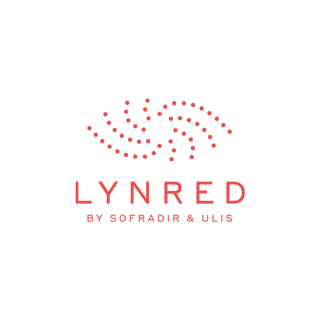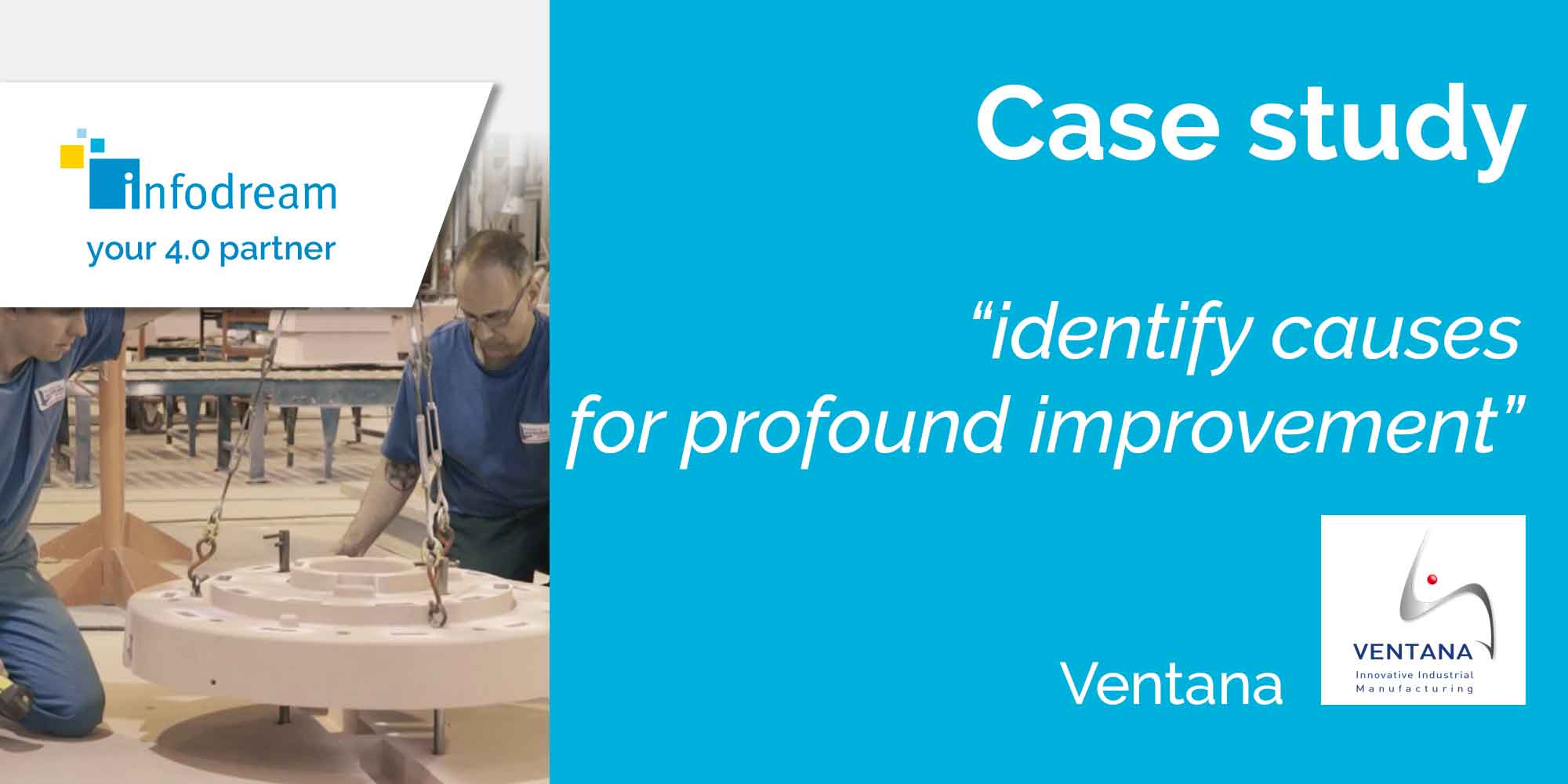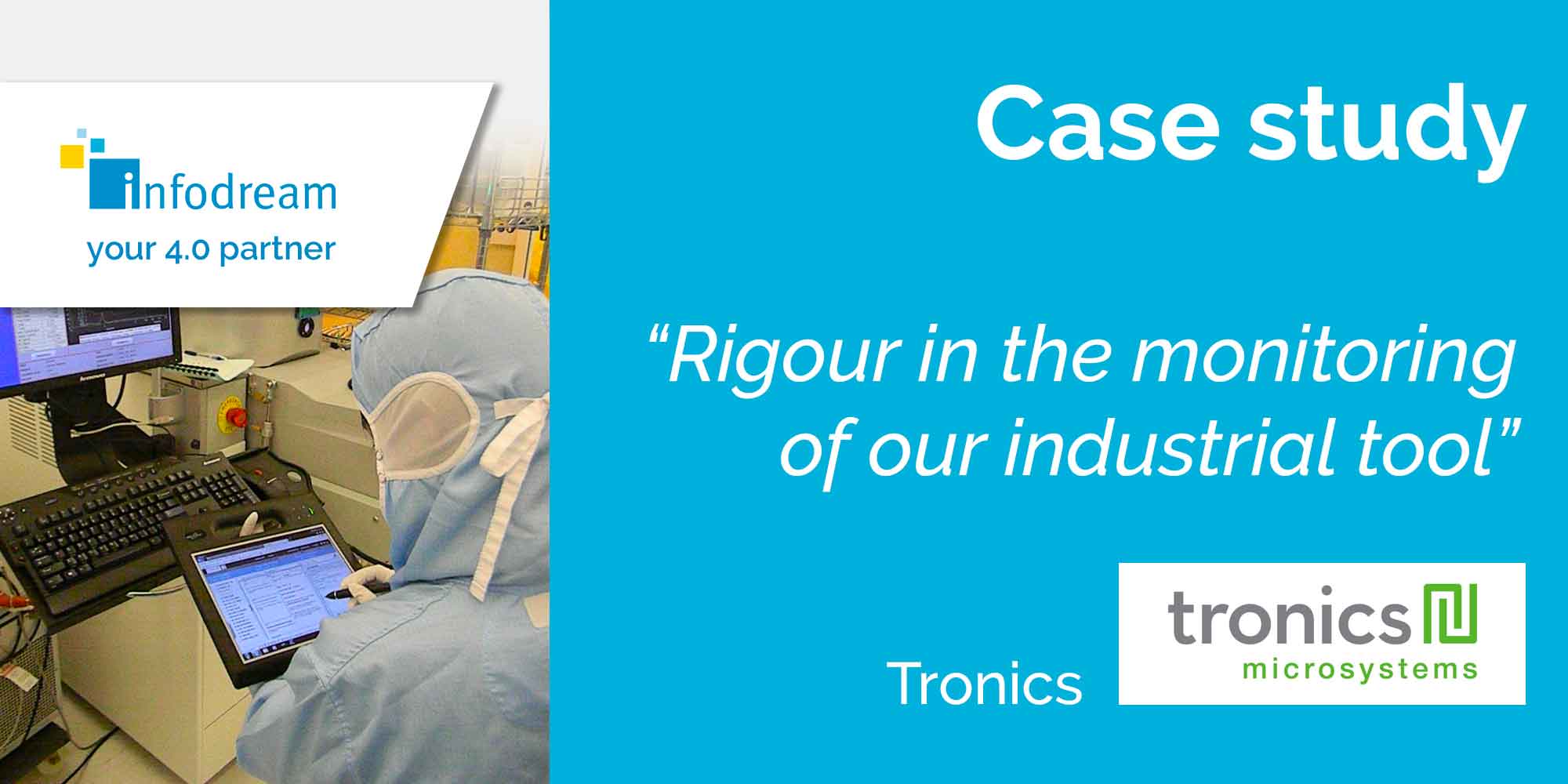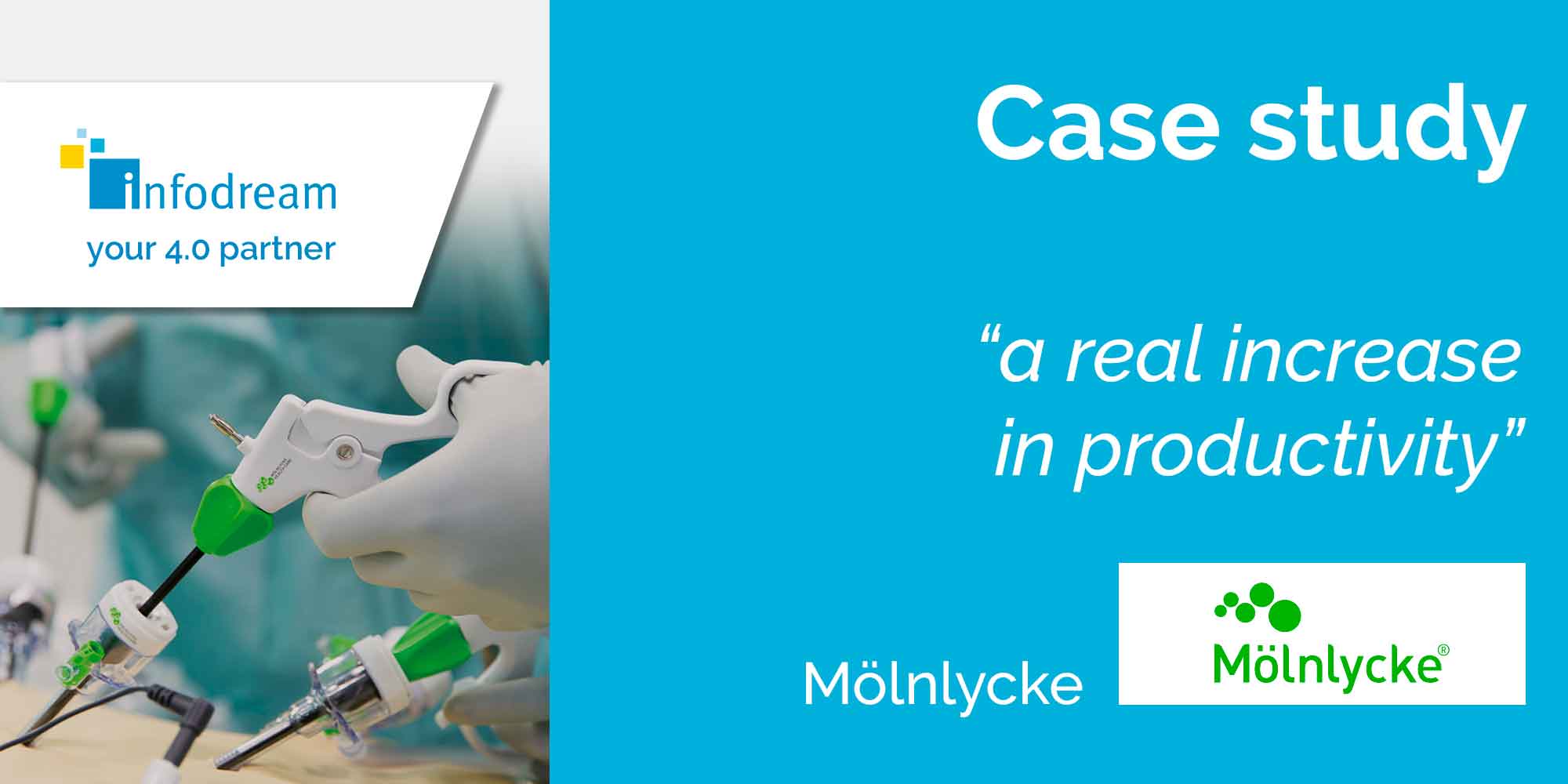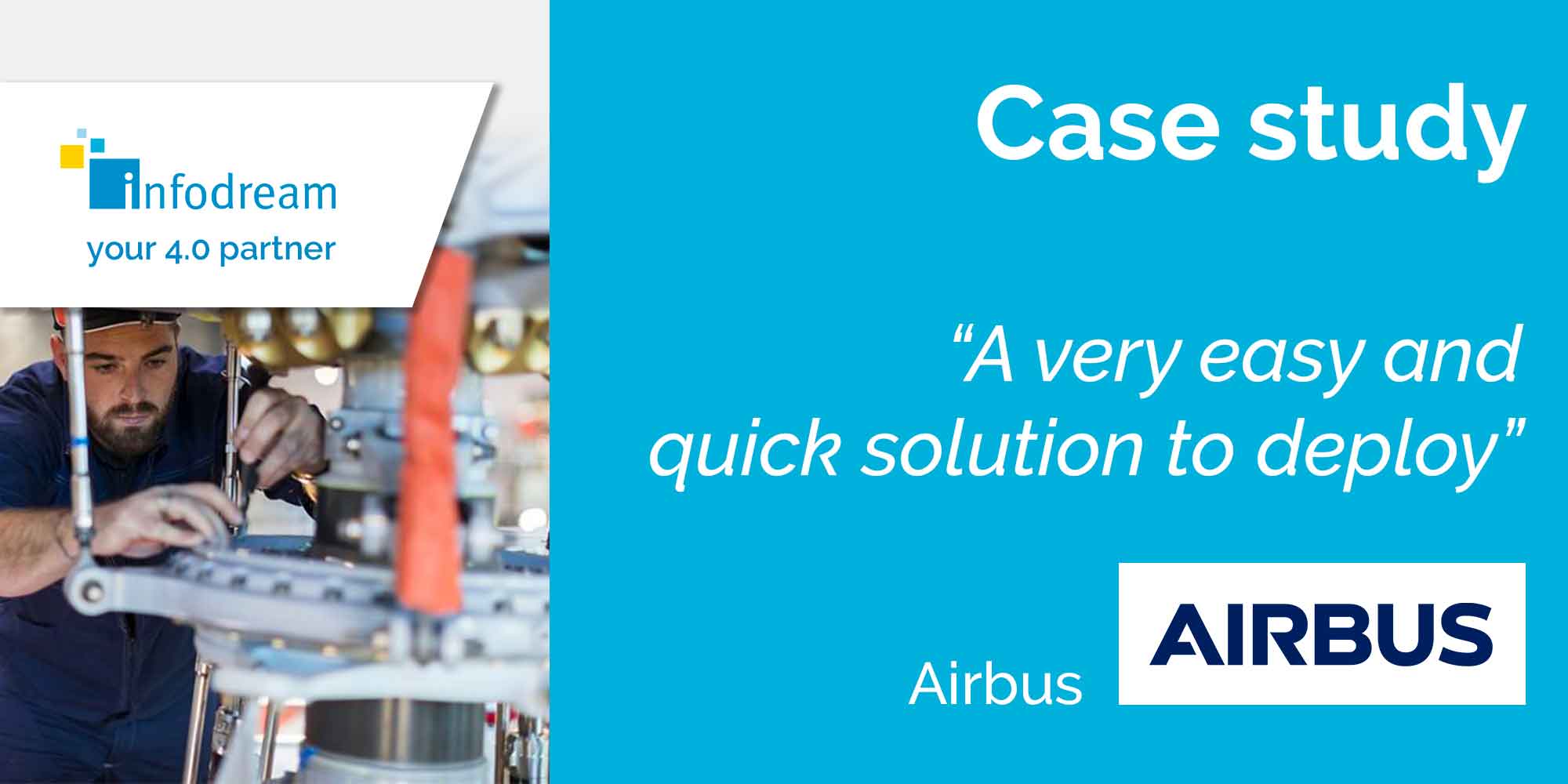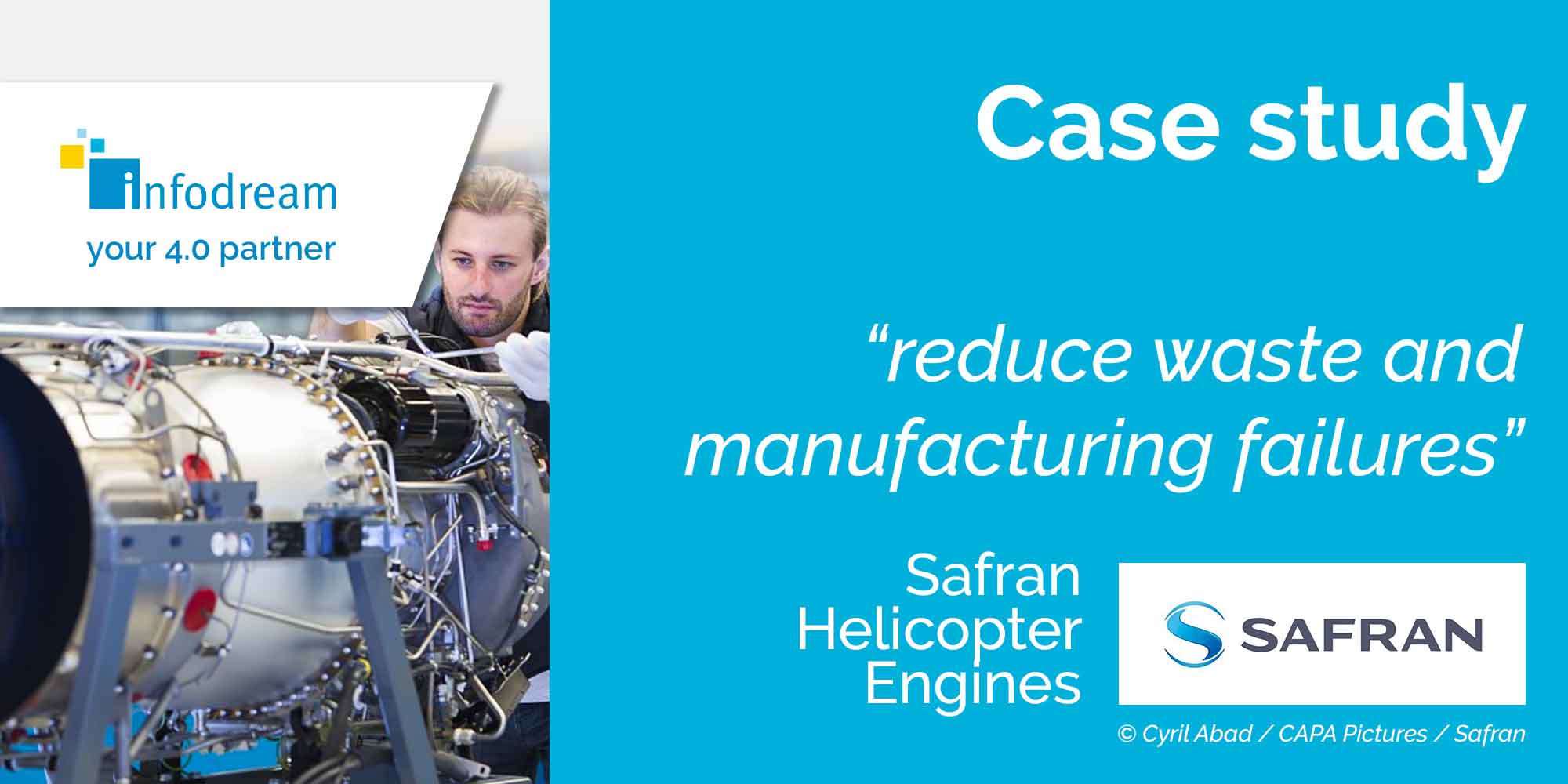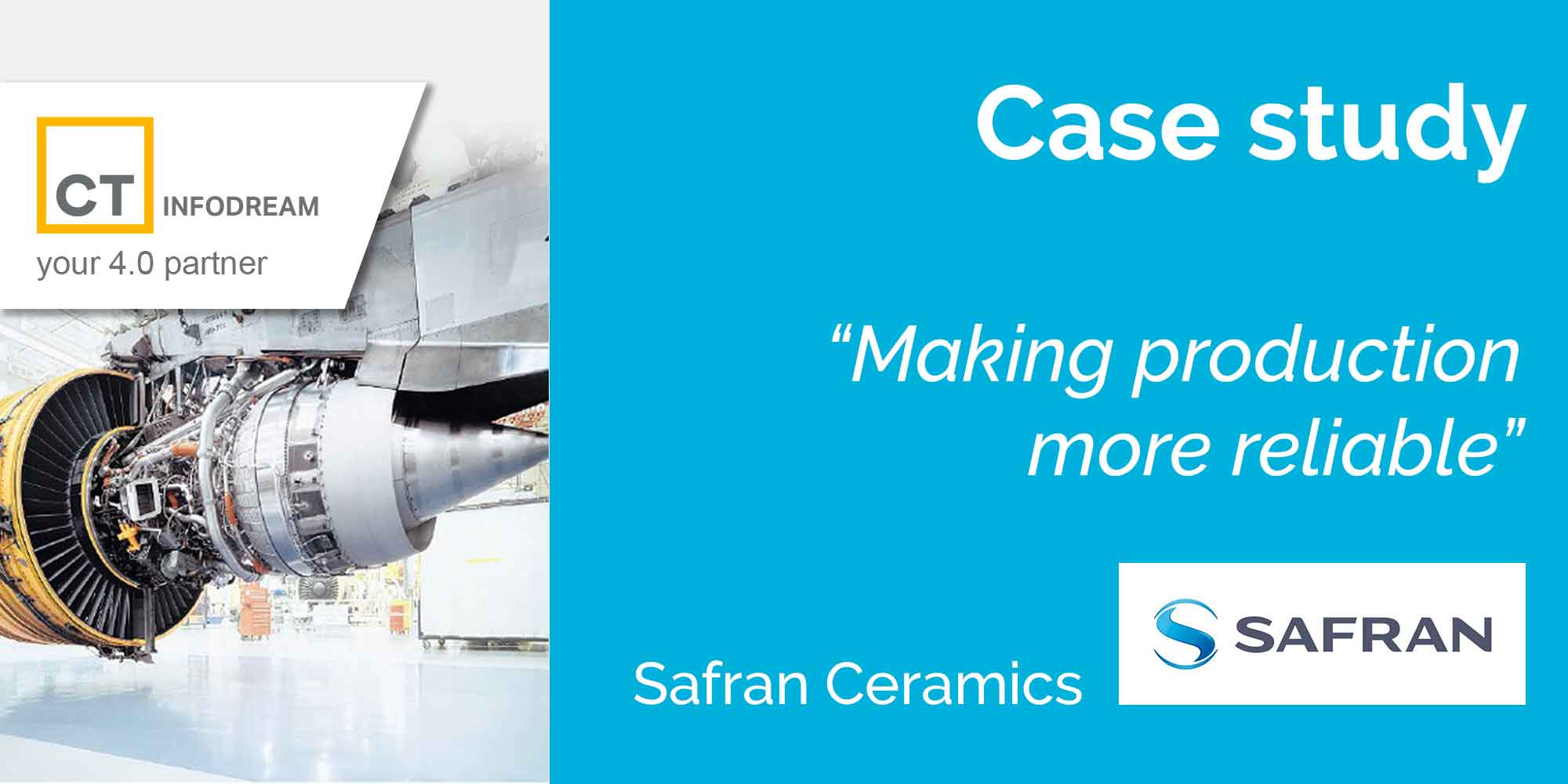
Safran Ceramics makes production more reliable with CT Infodream’s M.E.S.
Manage changes
in the production parameters
Making data
and production more reliable
Have real-time process feedback
to take fast decisions and actions
Connect
to existing software
Make the teams autonomous
on the software
Give operators a tool
to guide them
Increased data reliability
and product quality
Eliminate paper
from the workshop
Facilitated communication
between teams
Who is Safran Ceramics ?
Safran’s centre of excellence for high-temperature composite materials, Safran Ceramics is a strategic centre for the Safran Group’s work in the field of aeronautical equipment.
Located in Le Haillan (suburb of Bordeaux) in a new building of 9800 m2 fully connected, Safran Ceramics is a modern centre bringing together all R&T activities dedicated to ceramic matrix composites (CMC*) for aerospace.
CMCs can improve the performance of aircraft engines and thus reduce fuel consumption. These materials tolerate higher operating temperatures than current metal alloys (superalloys) and are lighter.
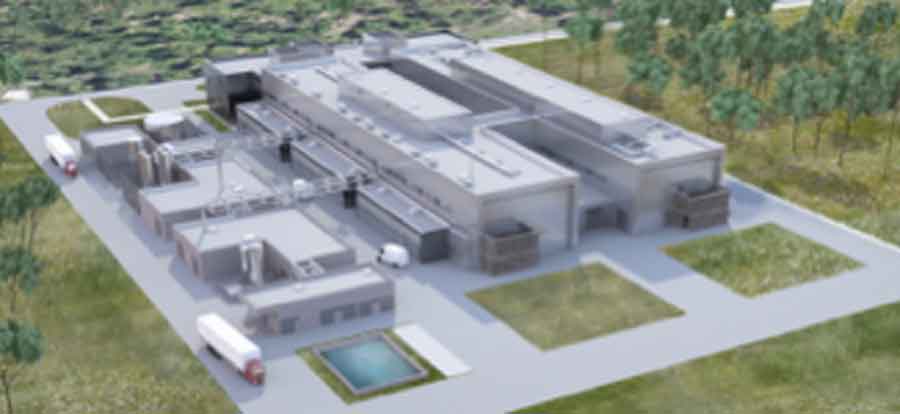
The factory houses around one hundred specialists divided into multidisciplinary teams, and 200 very high-tech research facilities. This equipment, some of which is unique in the world, is all interconnected for real-time acquisition of all research data, an essential asset for accelerating innovation and the agile work of the teams.
At Safran Ceramics, the employees are divided into 3 departments
– Studies and modelling
– Materials, processes and testing
– Technologies and Production Engineering: manufacturing and development of production means.
It is in this department that the MES was implemented.
The work carried out in Le Haillan is upstream of the development, industrialisation and production phases which will be carried out in the other companies of the Group.
The products produced are mainly turbine parts (blade and nozzle) and afterbodies (nozzle, mixer and ejector cone).


What did Safran Ceramics need?
Safran Ceramics wanted to :
- eliminate paper from the workshop.
- manage changes to production parameters.
- make data more reliable and have instantaneous production monitoring.
- facilitate communication between teams.
- guarantee the quality of the products to our customers.
Eliminating paper on the shop floor.
In the past, work instructions and production tracking sheets were designed on Word files and then printed.
The data collected in the workshop was written on loose sheets by the operators and then entered into an Excel file.
There was therefore a need for digitisation (electronic route card, work instructions, quality check sheets, record, etc).
Managing changes in the range.
As the process can be long and complex, changes to specifications and parameters can take place part way through production of a work order. It is therefore critical that these changes can be managed quickly and securely into the process.
Reliable data and instantaneous production monitoring.
Excel files could be opened and modified by different people without traceability, with the risk of error that this implies.
It was also necessary to ensure consistency in process definition and methods to reduce the variation in shopfloor working methods and allow operators to work as efficiently as possible.
Finally, it was not always clear who had made what changes, when and why, as three types of people were authorised to make changes :
- The process owner.
- The methods team
- The quality department to control version changes
Facilitate communication between teams.
In order to pass on information, travel between the offices and the workshop was a significant waste of time for the teams.
Guarantee the quality of our products to our customers.
The parts produced by Safran Ceramics are sent and tested on a test bench at the customer’s site (other Safran Group entities). These tests are long and costly, so we must be sure that the parts sent meet certain quality criteria.
How did Safran Ceramics hear about Infodream?
By Infodream’s response to a call for tender. On the other hand, the production manager was already familiar with the Qual@xy Suite and its possibilities. In fact, he was the driving force behind the project after the choice of Infodream had been made.
Why did you choose Infodream?
Among the respondents to the call for tenders launched by Safran Ceramics, an audit was carried out.
The differentiating elements that guided our choice are :
- The simplicity of the solution
- The autonomy allowed by the software
- The price
Simplicity
The first characteristic sought was simplicity. Without a dedicated department to install the tool and train employees, a turnkey solution was needed that was simple to set up, configure and use.
Simple to be flexible. Flexible for more freedom and autonomy.
Autonomy
Methodists have a lot of freedom to change processes. They do not need any coaching. The initial training showed them how to use the tool, how to set up the product and the process. It’s very simple, no IT development is needed to modify a process, everything happens at the parameterisation level.
Once you provide operators with a simple tool, they quickly adopt it and actually use it on a daily basis.
Price
Finally, the price was also a differentiating factor, with a factor of 3 compared to some competitors whose solution requires the permanent presence of a person for several days to set up, configure and make the necessary adjustments. And this has a cost…
The choice was made in a collegial manner with the head of the production department, the head of support and the head of the other departments.
How was the implementation of the solution?
The implementation of the solution went smoothly.
During the deployment phase, a dedicated computer was provided to communicate with Infodream. A test database was set up to configure the ranges safely before moving to the production base.
The methodists, the driving force behind the project, were the first to be trained and were able to participate in the training of the operators.
How long did it take to set up this MES project?
It took a year from the choice of the solution to going live.
What were the difficulties encountered? And how were they overcome?
There was no MES software before. The main difficulty of the project was to connect to other existing software at Safran Ceramics:
- Smarteam, for design, product names and versions;
- Historian, for recording OF production data;
- Carl Source for machine availability ;
- SAGE for scheduling, follow-up of planning and launching of OFs.
It was therefore necessary to know the environment of each of these softwares to allow Qual@xy to connect to them.
This was not so much a technical difficulty (the M.E.S Qual@xy is designed to connect to the machines and software existing in the factory) as a logistical one. We had to get in touch with the technical representatives of these companies, organise joint working meetings on the agendas of each one in order to move things forward quickly.
The POC (Proof of concept) was quickly put in place.
How were the teams prepared for the change?
By raising awareness and training the configurators. It was the configurators themselves who trained the operators.
How have they accepted this new tool?
Very positively. The staff have up-to-date ranges, and this saves them from having to record the data twice. The interface is user-friendly and the teams find the software easy to use.
Which user profiles work with the tool?
Workers, technicians and engineers.
Do you configure or modify the software yourself or do you use Infodream?
We are generally autonomous, but sometimes we call on Infodream’s support team.
For example, for questions relating to the configuration of ranges or things seen in training but which, due to lack of practice, have been forgotten.
What do you think of Infodream’s support team? On the project follow-up of our teams?
The support is always available, has a high reactivity and the solutions are adapted.
I was amazed! People are available, interested, consult the PC provided to analyse the data and always propose, after consultation, a suitable solution.
They gave us the right methodology to set up the inspection plans.
Franck Dupé, computer engineer
What are the benefits of using the M.E.S (Manufacturing Execution System)?
There are many, but here are the main ones:
Collecting data and identifying the impact of changing parameters
Now, information, measurements or traceability are entered directly into the software. In use, we notice that this allows us to collect much more information than before throughout the manufacturing process.
With this tool, the production and material departments have at their disposal a rich database allowing them to identify the impact of the modification of each parameter on the quality of the material.
A stock of data is thus built up with less effort and can be analysed at a later date if necessary.
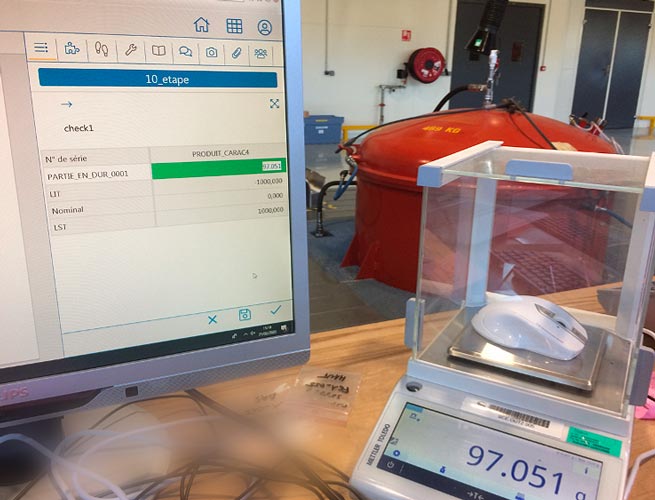
Changing ranges in a few clicks
Thanks to the flexibility of the tool, the methodists can modify the ranges in a few clicks, even during production! And all this is traced, as the Qual@xy M.E.S. allows all changes to be tracked thanks to the use of versioning (management of validation workflows).
Communication greatly facilitated
Another positive point is that the MES facilitates communication between the teams by linking the methodists and the operators. Now the workshop has reliable information updated by the methodists. The data is instantly transmitted and visible to everyone.
Conversely, the workshop provides data that can be consulted in real time by the methodists. Everyone can follow developments and consult the data entered.
The information flow is two-way, which facilitates communication and avoids unnecessary travel between offices and workshops.
Reports proving the quality of the delivered parts.
The parts sent to the customers meet the quality criteria they require, and the proof can now be brought to them! The MES allows the extraction of targeted reports on certain values of each part.
These reports will act as delivery notes and will accompany the parts throughout their testing phases.
In summary:
For Safran Ceramics: a gain in reliability
For operators: a dedicated tool to support them in their work
For managers: the assurance of a good match between the need and the product.
We know what we are doing and the product meets the initial expectations.
Franck Dupé,
IT engineer at Safran Ceramics
*CMC: ceramic matrix composites
These are ceramics reinforced with ceramic fibres, which remove their natural fragility. These materials differ from the metallic alloys usually used in the aeronautical industry in their resistance to high temperatures, their lightness and their mechanical strength. A distinction is made between different types of CMC according to the chemical nature of their matrix and reinforcements: carbon-based, silicon carbide-based or oxide-based CMC.
You may also be interested in these testimonials from our clients…
Lynred case study
For LYNRED, continuous improvement is a never-ending road… Vincent De Schuyteneer, data expert engineer at LYNRED, explains how his company is constantly improving its manufacturing processes with the Qual@xy SPC software. Who's LYNRED? LYNRED and its American subsidiary…
Ventana was able to identify areas for improvement in its processes
In this short french speaking video, the operator explains how he uses our Qual@xy Suite M.E.S. (Manufacturing Execution System).
Tronics brings rigour to the monitoring of its industrial tool.
Tronics Microsystems implemented Qual@xy Process software for the management of its Crolles plant. Founded in 1997, Tronics (Crolles,38) specialises in innovative nano and microsystems (MEMS and NEMS). These miniature devices are predominantly sensors and / or actuators, and are fabricated…
Mölnlycke Health Care case study
We can now look forward to increased efficiency, and a huge saving in our time – which, put simply – is priceless. Jacques MARIN Mölnlycke is one of the world's leading suppliers of single-use products for surgical and wound…
Airbus Helicopters case study
I was instantly attracted by the end user simplicity and easy implementation of Qualaxy Process. Eric Galanakis Production Manager Qual@xy SPC. After the deployment of Qual@xy SPC for its Quality activity in the manufacture of Elementary Mechanical Parts (more…
Safran Helicopter Engines case study
Safran Helicopter Engines specialises in the manufacture of complex mechanical assemblies for the aerospace industry and the maintenance, repair and overhaul (MRO) of small/medium size gas turbines. The company forms part of the global group of SAFRAN, whose subsidiary companies are…
Safran Aircraft Engines case study
The Safran Aircraft Engines site in Evry-Corbeil employs 2,800 people on a 72-hectare site; it has an 88 000 m2 workshop and a fleet of over 800 machines. This site is responsible for the machining and assembly of parts and…

